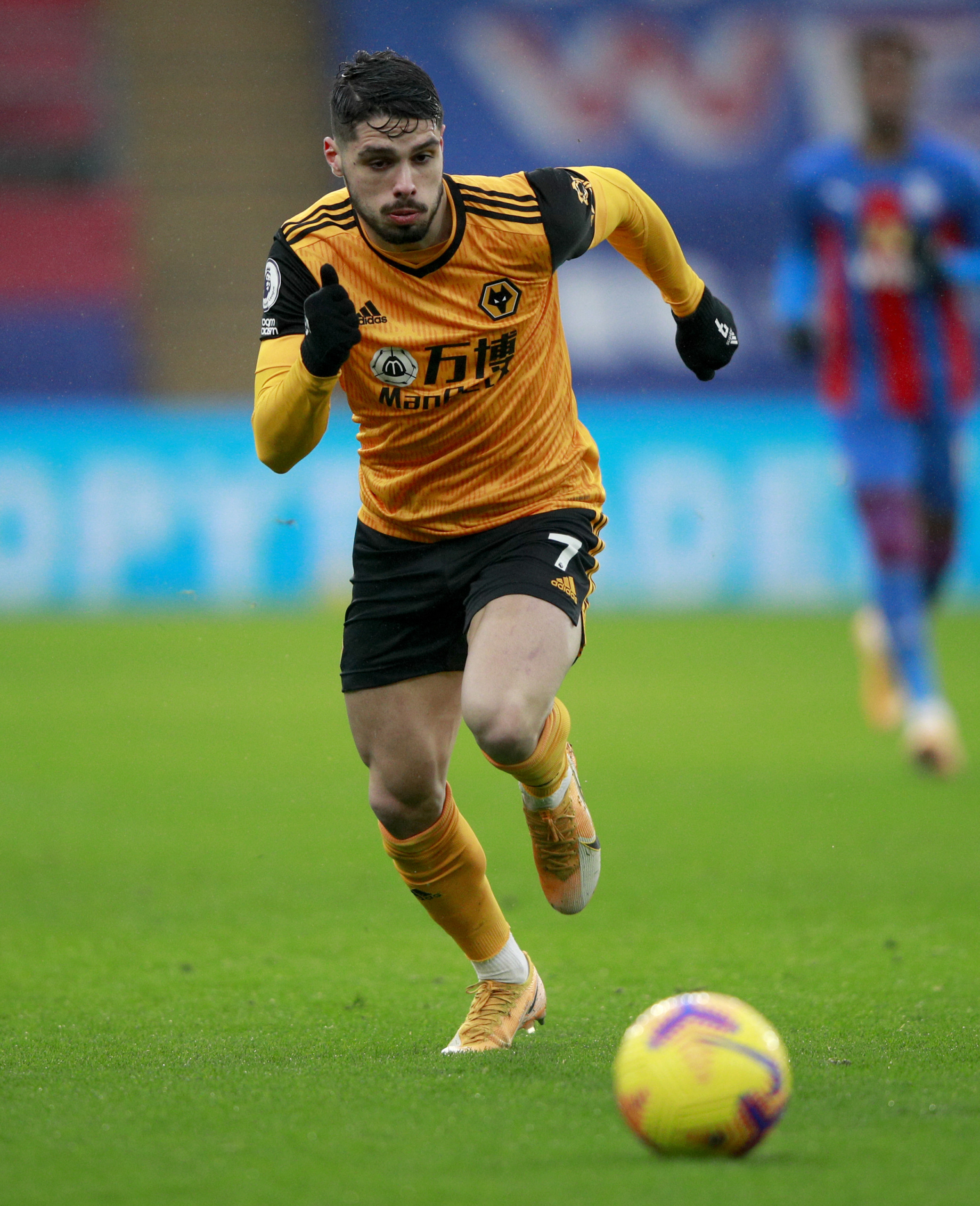When it comes to analysing football data, you’ll frequently read of metrics built around attacking actions – shots, dribbles, passes, for example – or out of possession defensive actions, such as pressures, tackles and interceptions. But what about carrying the ball?
Carries represent a not-insignificant portion of a player’s on-ball time, often the first action a player makes after receiving possession, but, on balance, they remain an under-scrutinised part of the game.
Thanks to John Stones’ performance for Manchester City against Leeds last weekend, carries were shoved to the front and given their moment in the spotlight at last.
Defending a half-time lead with 10 men, Leeds more-or-less allowed Stones to carry the ball as far as he liked into the Leeds half, with the freedom afforded to him seeing Stones break a record in recent Premier League history – accumulating the most forward carry distance in a match, going back to at least the start of the 2017/18 season, and racking up over 1000m in forward carry distance in total.
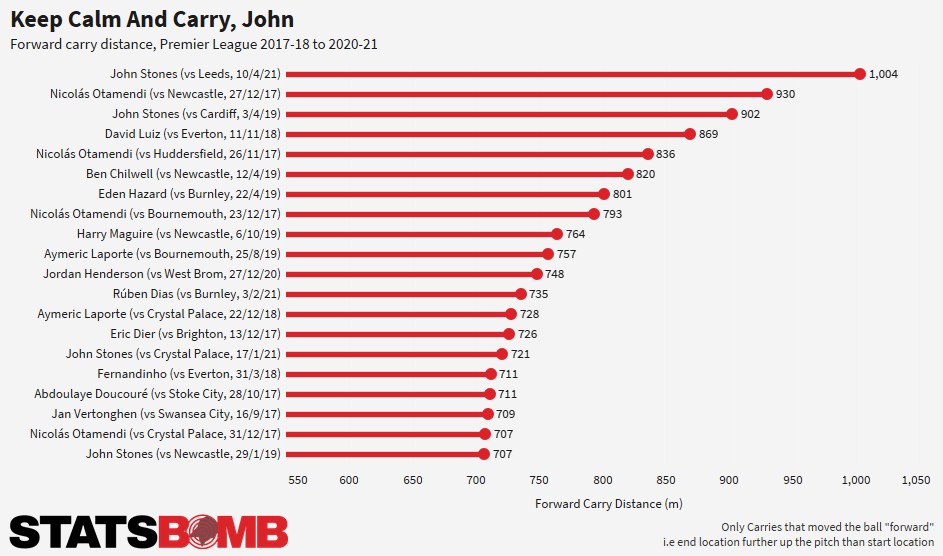
Today we want to examine carries across the Premier League season as a whole, so let’s first look at how forward carry length differs by position.
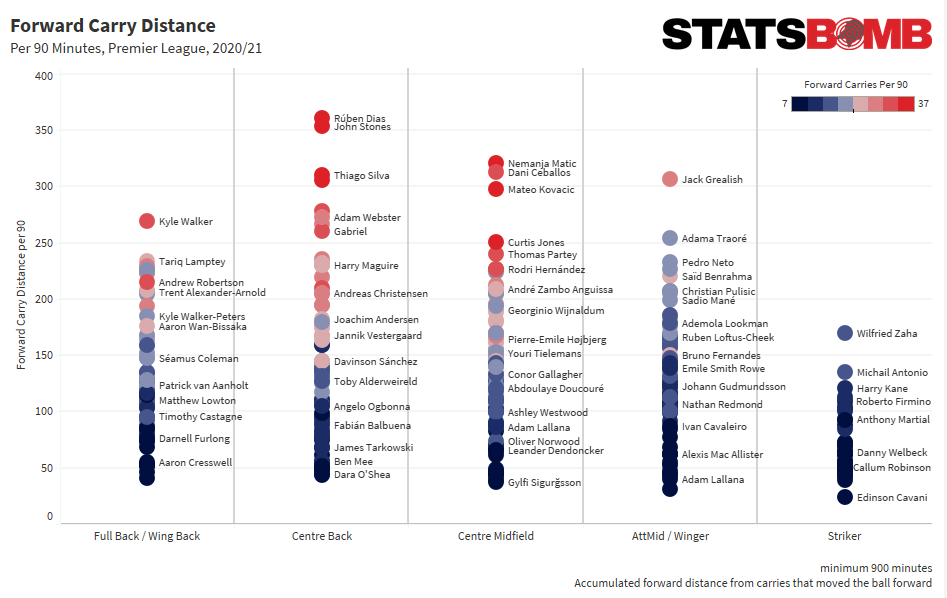
Stones and centre back partner Rúben Dias lead the way, each racking up over 350m in forward carries in an average game for Manchester City. Given the deeper lines of engagement and defensive blocks that City typically face up to, it’s often the job of Stones or Dias to hold possession of the ball and probe into opposition territory until they draw out a defender, who in turn leaves space for one of the centre backs to pass into.
It's clear that players that are involved early in the build-up phase - centre backs, full back, and central midfielders - tend to accumulate more forward carries in a match, with more space to move into and more time on the ball than granted to their attacking counterparts. That said, it's no surprise to see Wilfred Zaha leading the way in forward carry distance per 90 for players that play up front given the role he plays for Crystal Palace, likewise Jack Grealish, the central cog to Aston Villa's attack but also one that drops deep to get on the ball and move Villa into the final third. More on that later.
First, let’s chop this further and look at the individual action of ball carrying, and it's different uses as a ball progressor this season. Here are the fifteen longest carries in the Premier League in 2020/21.
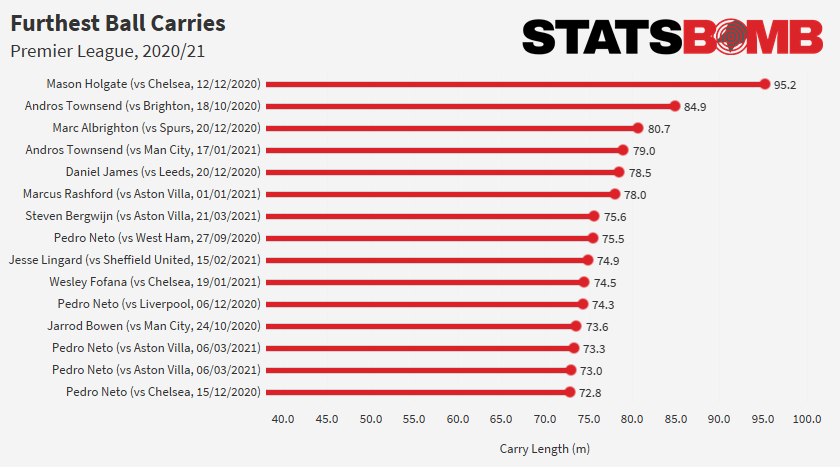
Hardly renowned for his lung-busting runs, you’re probably wondering what Mason Holgate was doing carrying the ball nearly the entire length of the pitch against Chelsea back in December.
You'll work it out just fine on your own if I fill in a couple more details: Everton were 1-0 up, and it was in the 91st minute of the match.
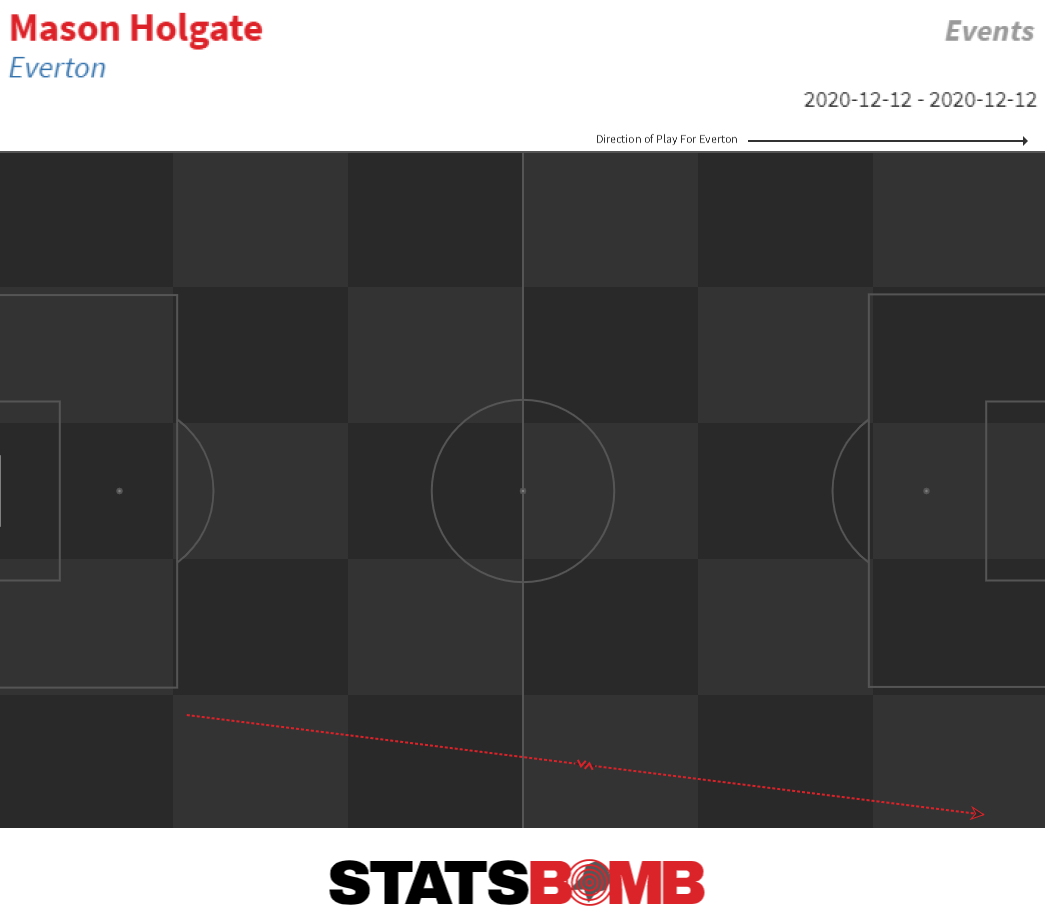
Yep. Picking up the loose ball from a Chelsea corner and heading straight for the opposite corner, simultaneously running down the clock and taking the ball as far away from Everton's goal as he could possibly get it. Everton did indeed see that game out, which you can almost entirely put down to Holgate’s heroics. Probably.
The other notable from that list is the appearance of Pedro Neto. Not once. Or twice, three, or even four times. Neto accounts for five of the fifteen longest carries in the Premier League this season.
Like a bolt of Portuguese lightning, Neto has been electric on the counter for Wolves this campaign, time and again getting on the ball and heading on a turbo-charge straight for goal.
Neto is quite literally capable of single-handedly turning defence into attack when afforded space. Here we have one of the aforementioned lung-busting carries. Neto picks up the loose ball after Wolves clear from an Aston Villa corner and starts motoring at full speed towards the Villa half, with just a Matt Targett-shaped rabbit in the headlights in his way, lurking in Neto's path around the half way line
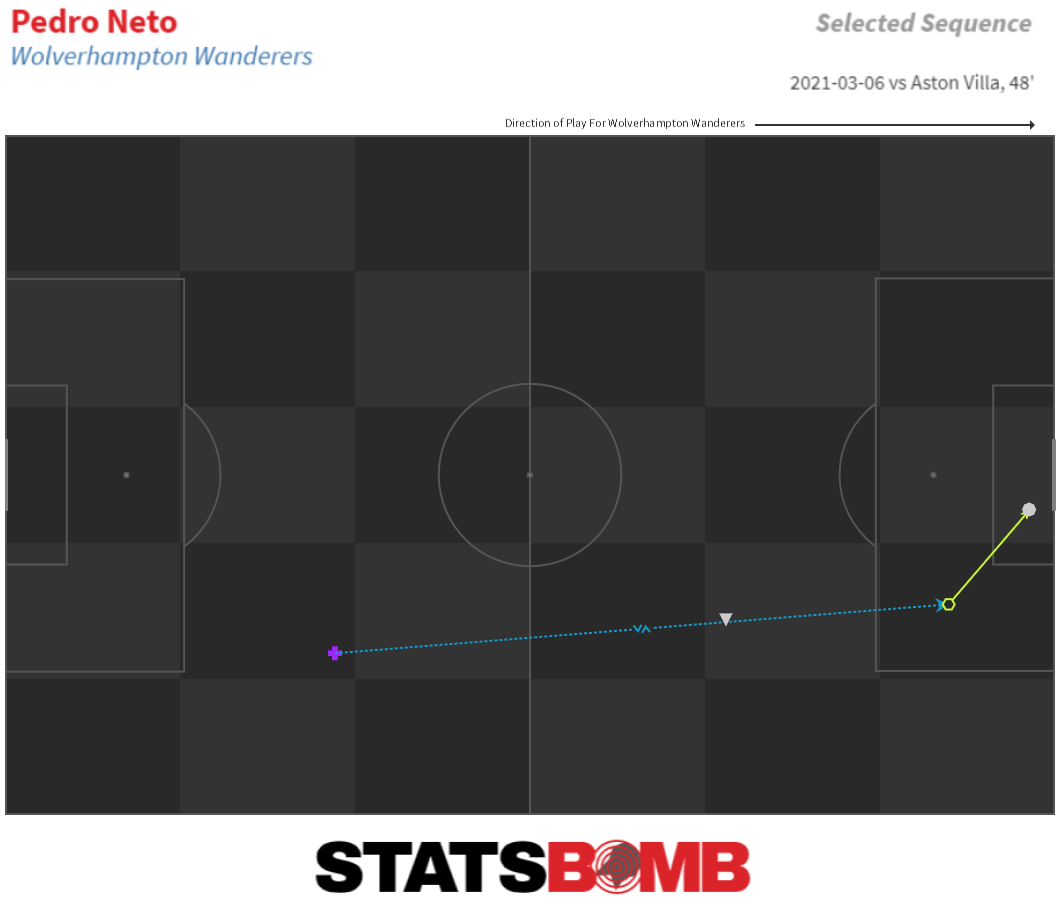
Targett engaged just inside his half, but it was nothing more than a token gesture as Neto burned past, eventually forcing Emiliano Martínez into a save just eight seconds after picking the ball up just outside his own box.
And that's not to mention Wolves teammate Adama Traoré. A pair of jet-engines blazing trails on either flank, Traoré’s equally as important as Neto to Wolves’ transition play. The duo’s ability to carry Wolves up the pitch in the opposition half stands out against the rest of the league.
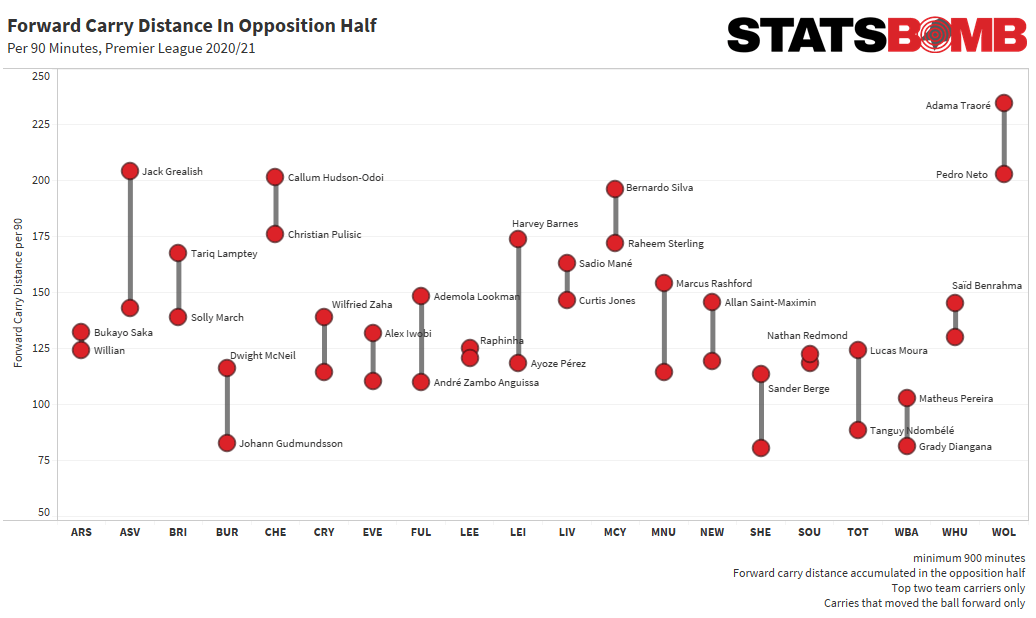
Between them they rack up an average of 437m of ball progression in the opposition half every game just from ball carrying, with Traoré comfortably ahead of the chasing pack (when isn’t he) and Neto with the third highest total, just a shade behind Jack Grealish.
Grealish’s importance to Villa is hardly breaking news, but Villa have won just two from eight since his injury. One of the standout creators in the league, his propensity for dropping in to receive possession in the middle third and then carrying Villa into attack has been a rich source of chance creation for his team, with his relentless drives forward earning him numerous kicks between ankle and knee, subsequently winning by far the most fouls in the Premier League this season.
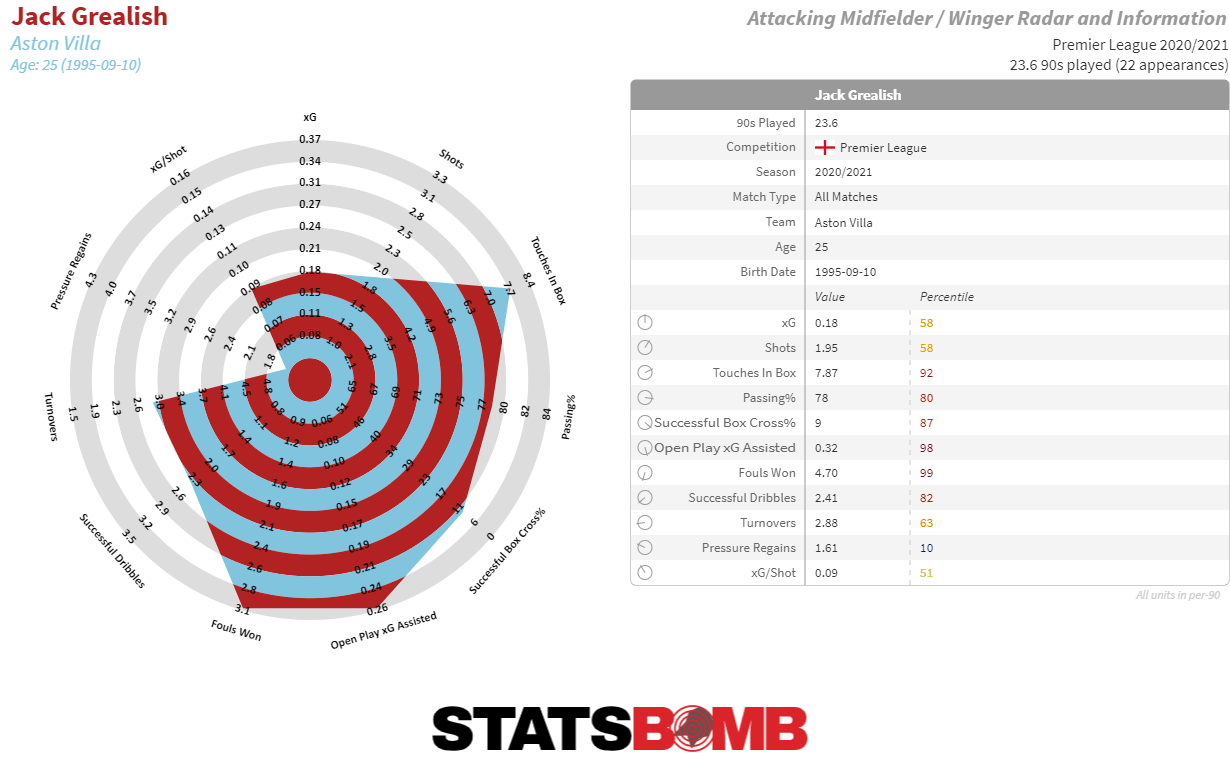
When he does manage to evade a clattering, Grealish’s carrying comes with a product at the end of it. He's noticeably separate from his Premier League contemporaries when it comes to creating shots at the end of a carry, or taking shots himself when he carries the ball to within range.
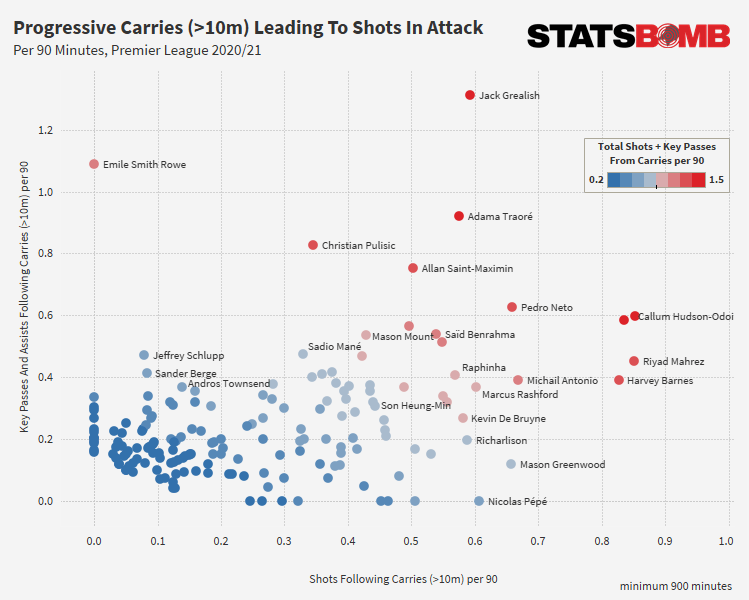
Only Emile Smith-Rowe has come close to matching Grealish’s 1.3 shots per 90 minutes created from carries over 10 metres in length this season, and Smith-Rowe’s played half as many minutes. Grealish does this consistently and regularly - carrying the ball into the attacking third before laying off to a teammate is a trait clearly more closely attributed to the Aston Villa man than any other player in the league.
And there you have it. Passing the ball, crossing for a teammate, beating a player on the dribble. Taking a shot. All important parts of the game. But how you get to those moments matters too. And you can't get there without a carry.
StatsBomb Data contains 3,300+ events per game and covers 80+ competitions in the 2020/21 season. If you're a team or organisation and want to find out how our data can help you towards achieving your objectives then contact us today.
